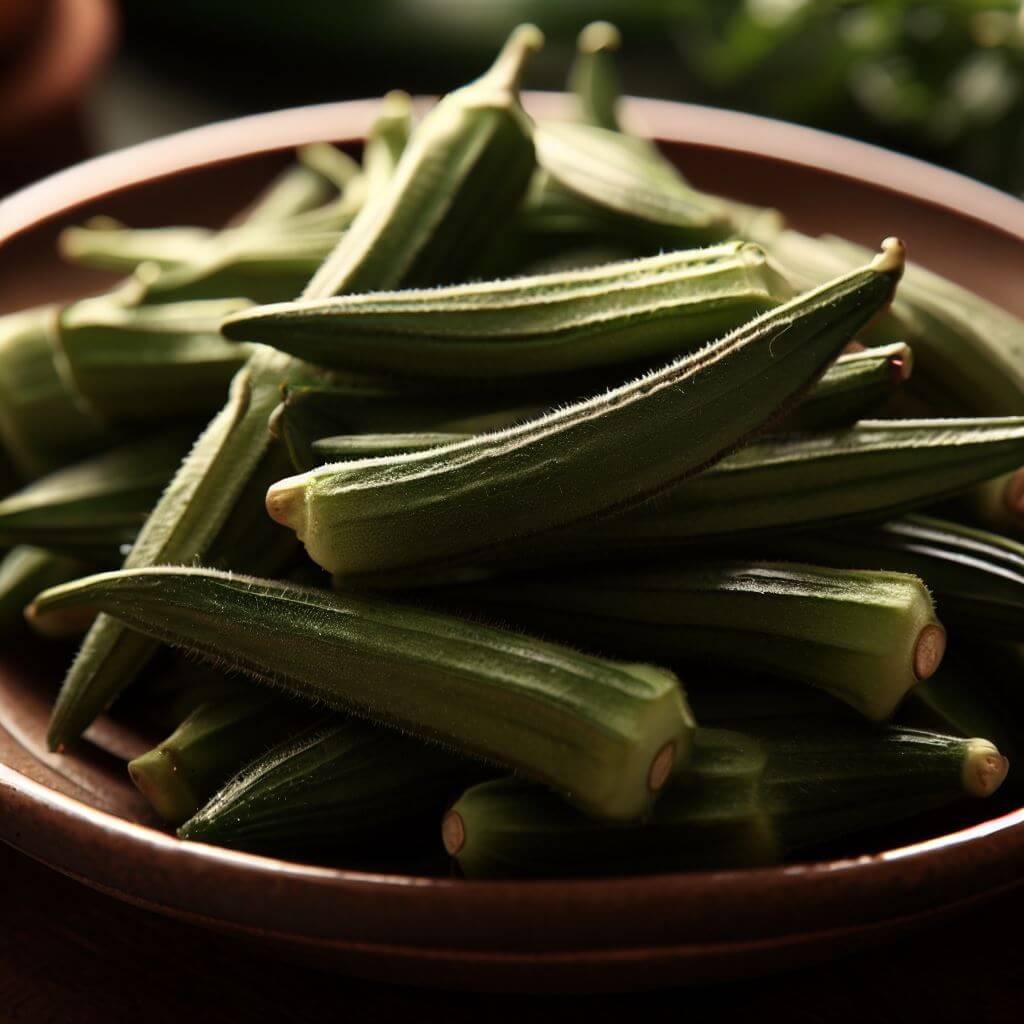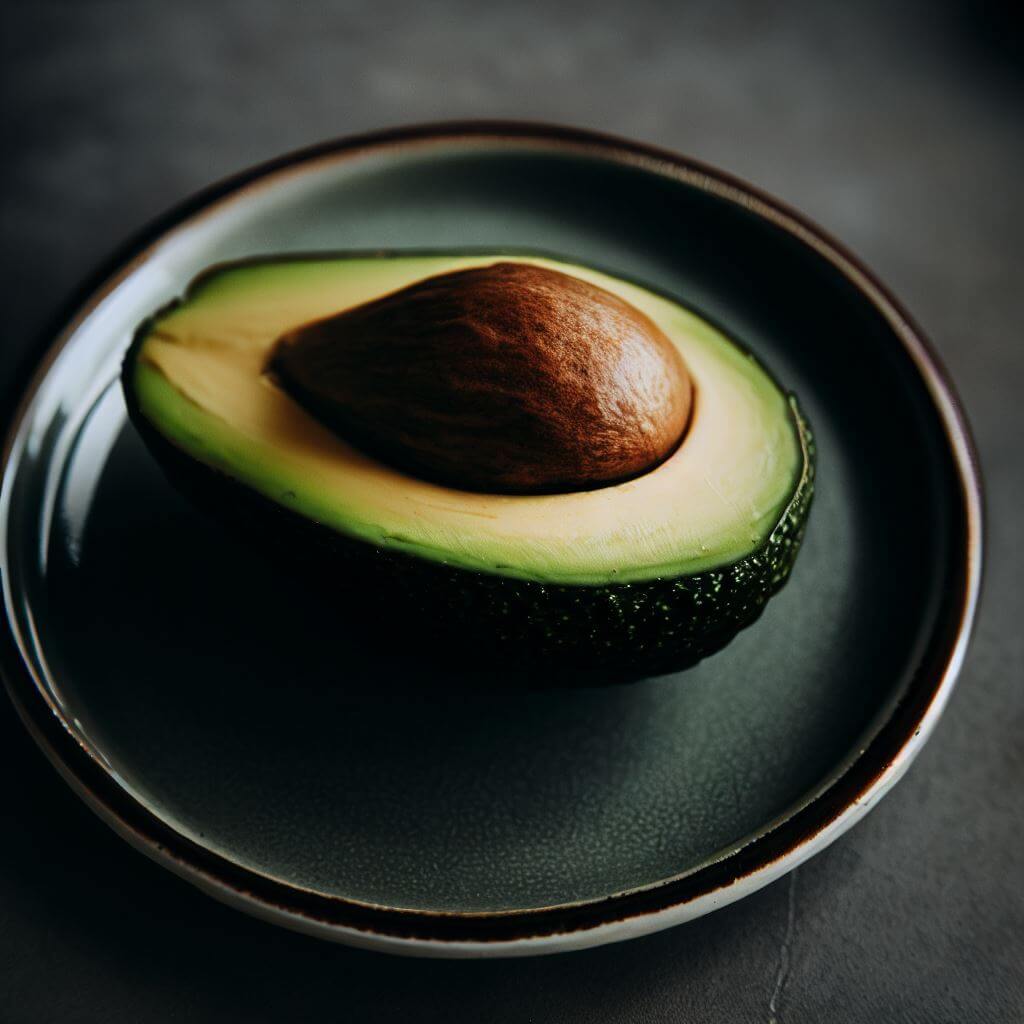Introduction
Ever wondered how much of an impact your diet can have on something as specific as your blood sugar levels? The answer may surprise you. It turns out, green foods are not just garnishes on your plate; they could be crucial players in managing your diabetes. So grab a notepad, because we’re about to dive into the “7 Incredible Green Foods That Lower Blood Sugar.”
The Science Behind Green Foods and Blood Sugar
When it comes to managing blood sugar levels, you might be wondering what makes green foods stand out. Is it all a marketing gimmick, or is there substantial science to back it up?
Well, it turns out that green foods are not just vibrant in color; they’re vibrant in their nutrient content too. Many of these foods are rich in key compounds that directly or indirectly impact your body’s insulin response, and hence your blood sugar levels.
Phytonutrients: The Unsung Heroes
Let’s start with phytonutrients, especially flavonoids. These compounds are not merely plant pigments; they are powerful antioxidants that combat oxidative stress, a factor closely linked with diabetes complications. They not only reduce inflammation but also have a direct effect on the glucose transport mechanisms in our cells. The result? Better blood sugar control.
Fiber: The Stabilizer
Another common element among green foods is their high fiber content. Fiber plays a critical role in managing your blood sugar levels by slowing down digestion. When your food takes longer to digest, glucose is released more gradually into your bloodstream, keeping spikes in blood sugar at bay.
Magnesium: The Helper Mineral
Green foods like spinach and avocado are rich in magnesium, a nutrient known for improving insulin sensitivity. A deficiency in magnesium can lead to insulin resistance, often resulting in elevated blood sugar levels. So, consuming foods rich in magnesium can be your tactical move against fluctuating blood sugar levels.
Low Glycemic Index: Slow and Steady
Most green foods have a low glycemic index, meaning they are slow to affect your blood sugar levels. Foods with a low glycemic index are digested and absorbed at a slower rate, leading to a more gradual rise in blood sugar.
So you see, it’s not just one element that makes green foods effective in managing blood sugar, but a combination of various nutrients and compounds that work in synergy to help you maintain optimal levels.
Criteria for Ranking the Green Foods
When it comes to ranking these green marvels, a few key factors come into play. It’s not enough for a food to be just green and leafy; it must meet certain criteria to be considered beneficial for managing blood sugar levels.
Scientific Evidence
The most crucial criterion is, of course, the scientific evidence supporting the food’s effectiveness in blood sugar management. Various studies and trials must indicate a favorable outcome in terms of lower glycemic index, insulin sensitivity, or overall blood sugar levels.
Nutrient Density
The green food must be packed with a variety of essential nutrients like vitamins, minerals, and antioxidants. The more, the better. We’re talking about a full range of vitamins and vital trace elements that can benefit overall health, not just blood sugar levels.
Versatility in Diet
Another criterion is how easily you can include the food in your daily diet. The more versatile it is, the better. This makes it easier to consume regularly, thus allowing for more consistent benefits.
Accessibility and Affordability
The ideal green food should be easily accessible in grocery stores and affordable enough to be a regular part of your diet. Exotic foods might have great health benefits, but if they’re hard to find or too expensive, they’re not going to be a practical option for most people.
Taste Factor
Last but certainly not least, taste plays a role too. If a food has all the nutrients but is unpalatable, chances are it won’t be a mainstay in anyone’s diet. Foods that are both nutritious and delicious hit the sweet spot.
7 Green Foods That Lower Blood Sugar
The foods that make it to this list have been carefully chosen based on their nutrient profiles, proven health benefits, versatility in the diet, and accessibility. Here, we rank the top seven green foods that are not only packed with essential nutrients but also have unique characteristics that make them particularly effective in managing blood sugar levels.
7. Artichoke

Artichokes might not be the first food that comes to mind when you think of blood sugar management, but they should not be overlooked. Here’s why:
Rich in Fiber
One medium-sized artichoke contains nearly 7 grams of fiber. As mentioned earlier, fiber helps to slow the digestion and absorption of carbohydrates, which leads to a gradual rise in blood sugar levels, rather than a spike.
High in Antioxidants
Artichokes are loaded with antioxidants, particularly a compound called cynarin. Cynarin has been shown to improve liver function, and a well-functioning liver is essential for the effective management of blood sugar levels.
Low Glycemic Index
With a low glycemic index, artichokes won’t cause rapid spikes in blood sugar. This makes them an excellent addition to a diabetes-friendly diet.
Versatility
Artichokes can be grilled, steamed, or even added to salads and dips. This makes them an incredibly versatile food that can be easily incorporated into various meals.
6. Seaweed
Seaweed may be a staple in Asian cuisines, but its benefits for blood sugar management are globally relevant. Let’s delve into why seaweed is a worthy addition to your diet:

Rich in Iodine
Seaweed is incredibly rich in iodine, a mineral that is essential for proper thyroid function. The thyroid plays a role in regulating metabolism, including the metabolism of carbohydrates, thereby affecting blood sugar levels.
High in Fiber and Low in Calories
Seaweed is another high-fiber food, and it’s also low in calories. The fiber content again helps to stabilize blood sugar levels.
Contains Fucoxanthin
Some types of seaweed, such as brown seaweed, contain a pigment called fucoxanthin. Preliminary research suggests that fucoxanthin may help improve insulin sensitivity, making it easier for your body to take sugar from your bloodstream into your cells.
Versatility in Cuisine
Seaweed is quite versatile and can be used in various forms such as nori sheets for sushi, wakame in salads, or kelp noodles as a low-carb pasta alternative. This makes it easier to include in your regular meals.
5. Edamame

Edamame, or young soybeans, have become increasingly popular as a nutritious and tasty snack. Let’s explore the factors that make edamame an excellent food for managing blood sugar:
Rich in Protein
Edamame is an excellent source of plant-based protein, with about 18 grams per cup. Protein has a minimal impact on blood sugar and can actually help stabilize it by promoting feelings of fullness and delaying hunger.
High Fiber Content
Like other foods on this list, edamame is rich in fiber. A cup provides about 8 grams of fiber, aiding in slower carbohydrate absorption and thus a more gradual rise in blood sugar levels.
Contains Isoflavones
Edamame is rich in isoflavones, a type of phytonutrient found in soy products. Some studies suggest that isoflavones may help improve insulin sensitivity, although the research in this area is still inconclusive.
Versatility
Edamame can be enjoyed in various ways—boiled, steamed, or even roasted. They can be eaten on their own, tossed into salads, or used as an ingredient in various recipes, making them a versatile addition to your diet.
4. Okra
Okra is a green vegetable that is a staple in Southern and Indian cuisine. While it may be best known for its role in dishes like gumbo, it also has several health benefits that make it a good food for blood sugar management:

High in Soluble Fiber
Okra is particularly rich in soluble fiber, the type of fiber that forms a gel-like substance in the gut. This can help slow down digestion and the absorption of sugar, leading to more stable blood sugar levels.
Rich in Nutrients
Okra is a nutrient-dense food, packed with vitamins like A, C, and K, as well as minerals like magnesium. A well-nourished body is generally better at regulating blood sugar.
Contains Myricetin
Okra is a good source of the flavonoid myricetin, which has been studied for its potential to help lower blood sugar levels. While more research is needed, the existing evidence is promising.
Culinary Versatility
Okra can be grilled, fried, steamed, or boiled. It can also be used in stews and stir-fries, making it a versatile ingredient that can be easily included in a variety of meals.
3. Oolong Tea

Oolong tea, a traditional Chinese tea, sits somewhere between green and black tea in terms of oxidation and flavor. It has garnered attention for its potential impact on various aspects of health, including blood sugar regulation.
Polyphenols and Antioxidants
Oolong tea is rich in polyphenols and antioxidants, which may have beneficial effects on insulin sensitivity and blood sugar levels. Some studies have shown that the polyphenols in oolong tea can inhibit the enzymes responsible for converting starches into sugar.
Caffeine Content
The caffeine content in oolong tea is moderate compared to that in coffee but higher than that in green tea. Caffeine has been shown to increase insulin sensitivity, which could potentially help in regulating blood sugar levels. However, it’s important to note that excessive caffeine can have the opposite effect, so moderation is key.
Helps in Weight Management
Weight management is crucial for blood sugar control, and some studies have suggested that oolong tea may help with weight loss or maintenance. This could indirectly help in better blood sugar management.
Easy to Incorporate
Oolong tea is easy to incorporate into your daily routine. It’s a comforting, flavorful beverage that can be enjoyed hot or cold, making it a convenient option for those looking to manage their blood sugar.
2. Avocado
Avocado has become a popular superfood in recent years, and it’s not hard to see why. The creamy, green fruit is not only delicious but also packed with nutrients and health benefits, including attributes that make it excellent for blood sugar control.

Healthy Fats
Avocados are rich in monounsaturated and polyunsaturated fats, which are known for their heart health benefits. These fats can improve insulin sensitivity, making it easier for your body to regulate blood sugar.
High in Fiber
One medium avocado provides about 10 grams of fiber, a nutrient known for its blood sugar-stabilizing effects. Fiber slows down the digestion and absorption of carbohydrates, preventing rapid spikes in blood sugar.
Low Glycemic Index
Avocados have a low glycemic index (GI), meaning they have a minimal impact on blood sugar levels. Foods with a low GI are preferable for managing blood sugar.
Nutrient-Dense
In addition to healthy fats and fiber, avocados are also an excellent source of vitamins and minerals, including potassium, which helps in balancing the body’s electrolytes and may contribute to better insulin sensitivity.
Versatile in the Kitchen
Avocado’s creamy texture and mild flavor make it incredibly versatile in the kitchen. It can be added to salads, made into guacamole, spread on toast, or even blended into smoothies.
1. Spinach

Spinach, a leafy green vegetable packed with nutrients, reigns supreme when it comes to foods that are beneficial for regulating blood sugar levels. This humble vegetable is not just a staple of healthy eating but also has specific characteristics that make it ideal for anyone looking to control their blood sugar.
Rich in Nutrients
Spinach is a nutritional powerhouse, boasting an impressive profile that includes high levels of Vitamin K, Vitamin A, Vitamin C, and folic acid. It also contains essential minerals like magnesium, manganese, and iron. Each of these nutrients plays a specific role in maintaining overall health, with some even having direct effects on blood sugar management.
Vitamin K
Vitamin K is primarily known for its role in blood clotting, but it’s also thought to play a role in improving insulin sensitivity, which is crucial for blood sugar control.
Magnesium
Magnesium is vital for the proper functioning of enzymes that help the body to metabolize sugars. A deficiency in magnesium has been associated with insulin resistance, a precursor to diabetes.
High Fiber Content
Spinach is high in fiber, especially when consumed in its raw form. As mentioned in earlier sections, dietary fiber is beneficial for stabilizing blood sugar levels as it slows down the rate at which sugar is absorbed into the bloodstream.
Low Caloric Density
Spinach contains very few calories, making it an excellent food choice for weight management. Since obesity is a known risk factor for diabetes and other metabolic diseases, incorporating low-calorie, high-nutrient foods like spinach can be an effective strategy for blood sugar control.
Antioxidant Properties
Spinach is rich in antioxidants like quercetin, kaempferol, and zeaxanthin. Antioxidants are compounds that help to neutralize harmful free radicals in the body, reducing oxidative stress and inflammation—factors that are known to contribute to insulin resistance and poor blood sugar control.
Versatility in the Kitchen
One of the best things about spinach is its versatility. It can be enjoyed in various forms—raw in salads, cooked in stews, blended in smoothies, or even baked into casseroles. This makes it easy to include in daily meals, thereby increasing your chances of reaping its many benefits.
Easy to Grow at Home
For those interested in sustainable options, spinach is relatively easy to grow at home, even in small spaces or containers. This gives you access to fresh, organic spinach that you can incorporate into meals.
Precautions
While spinach offers numerous benefits, it’s worth noting that it is high in oxalates, which can contribute to kidney stones in susceptible individuals. Also, its high Vitamin K content may interfere with blood-thinning medications. Therefore, it’s always a good idea to consult a healthcare provider if you have any existing health conditions.
Meal Planning Tips
Meal planning can be a critical tool for those looking to manage their blood sugar levels effectively. Here are some useful tips to make your meal planning more effective:
Start with Balanced Portions
A balanced meal generally consists of a healthy portion of protein, good fats, and complex carbohydrates, including a significant amount of fiber. This ensures that the body gets a steady release of energy without causing a spike in blood sugar levels.
Prioritize Low-Glycemic Foods
Foods with a low glycemic index (GI) are digested more slowly, which helps to regulate blood sugar levels. Incorporate low-GI foods like whole grains, legumes, and of course, leafy greens like spinach.
Timing is Everything
Eating at regular intervals helps in maintaining a stable blood sugar level. Skipping meals or going too long between eating can cause blood sugar levels to drop or spike, so try to eat every 3-4 hours.
Keep Healthy Snacks Handy
Snacking on nutrient-rich foods can be a great way to manage your blood sugar levels between meals. Opt for snacks that combine protein, healthy fats, and fiber for sustained energy.
Plan and Prep Ahead
One of the easiest ways to stray from a balanced meal plan is by not having the right foods readily available. Preparing meal components in advance, like chopping veggies or cooking lean proteins, can make it easier to stick to a healthy eating plan.
Stay Hydrated
Proper hydration can help in the effective management of blood sugar. Avoid sugary drinks and excessive caffeine, opting for water, herbal teas, or infused water for most of your hydration needs.
Common Mistakes to Avoid
Even with the best intentions, there are some common pitfalls that can hamper your efforts to manage blood sugar effectively.
Overcompensating for Low Blood Sugar
While it’s essential to address low blood sugar levels, eating too many high-sugar foods as a quick fix can cause your levels to swing to the other extreme. Instead, aim for a more balanced approach to bring your blood sugar back to a stable range.
Relying on Processed Foods
Many processed foods are labeled as ‘low sugar’ or ‘diabetic-friendly,’ but they may still contain unhealthy fats or be high in sodium. Always check the nutrition label and ingredients list when purchasing pre-packaged foods.
Ignoring Portion Sizes
Even healthy foods can contribute to blood sugar spikes if consumed in large portions. Being mindful of serving sizes is key to effective blood sugar management.
Not Tracking Your Foods
It can be easy to lose track of what you’re eating, but keeping a food diary can offer insights into how different foods affect your blood sugar levels. There are many apps and tools available to make this process more manageable.
Overlooking Physical Activity
Exercise plays a significant role in managing blood sugar, but it’s often overlooked. Physical activity can help improve insulin sensitivity, making it easier for your body to regulate blood sugar levels. Aim to include at least 30 minutes of moderate exercise most days of the week.
Reinventing Your Health
You’ve just read about the 7 incredible green foods that can help you maintain healthy blood sugar levels. If you’re looking for a quick and easy way to remember these foods and why they’re beneficial, don’t miss our summary video below. It’s a concise guide that will reinforce the essential points you’ve learned today.
As we’ve explored, managing blood sugar levels is an essential aspect of overall health, particularly for those dealing with diabetes or insulin resistance. The good news is that simple lifestyle changes, like incorporating green foods rich in nutrients and fiber, can make a substantial difference. From the fiber-rich artichokes to the healthy fats in avocados, these green foods can be powerhouses for stabilizing your blood sugar levels.
Meal planning tips and understanding common mistakes are equally crucial in this journey. Balancing macronutrients, focusing on low-GI foods, and monitoring portion sizes can set you on a path to sustained well-being. Furthermore, exercise and hydration are key supporting players that should not be neglected.
In summary, reinventing your health doesn’t require a drastic overhaul but rather a series of thoughtful choices. Being proactive about your nutritional intake and lifestyle can go a long way in managing blood sugar levels and, ultimately, enhancing the quality of your life. Your journey to better health starts with the steps you take today, no matter how small they may seem at the moment.
FAQs
1. What are the best green foods for managing blood sugar?
Foods like spinach, avocado, and oolong tea are excellent choices because they offer a balanced mix of fiber, healthy fats, and antioxidants that can help regulate blood sugar levels.
2. How can I start meal planning effectively?
Begin by understanding your body’s needs and how different foods affect your blood sugar levels. Prioritize balanced meals that include low-GI foods, proteins, and healthy fats. Planning and preparing your meals in advance can also make it easier to stick to a healthy eating plan.
3. Are there any foods I should avoid?
High sugar and high-glycemic foods should generally be avoided, as they can cause rapid spikes in blood sugar levels. Processed foods, despite being labeled as ‘healthy’ or ‘low-sugar,’ can also be misleading and may contain unhealthy fats or high sodium levels.
4. Can exercise help in managing blood sugar levels?
Yes, exercise can significantly help in managing blood sugar. Physical activity can improve insulin sensitivity and help regulate blood sugar levels more effectively. Aim for at least 30 minutes of moderate exercise most days of the week.
5. Do I need to eliminate all carbs from my diet?
No, carbohydrates are an essential part of a balanced diet. The key is to choose complex carbohydrates like whole grains and legumes, which are digested more slowly and have a less significant impact on blood sugar.





